Image: St. Vitus Cathedral, Prague, Czech Republic [Rafael Saes via Unsplash]
“Truly, truly, I say to you, unless one is born of water and the Spirit, he cannot enter the kingdom of God.” —John 3:5
Jesus’ message of being born anew of water and the Spirit to Nicodemus surprises his interlocutor. Jesus comments on Nicodemus’ lack of understanding: “Are you a teacher of Israel, and yet you do not understand this?” (John 3:10). The reason Jesus expects a teacher of Israel to understand what he is saying is that the imagery of water and Spirit leading God’s covenant people to a new life is not a new teaching. It is prevalent through the Old Testament.
In my previous article, I sought to demonstrate how God’s actions in flood story in Genesis were in fact based in his covenant with humanity and how he used Noah to be a prophet in the midst of sinful humanity. While we continue to enjoy the promise that God made to never destroy all flesh with a flood again (Genesis 9:8–11), there is even more from the flood narrative that is relevant for us today.
Spirit, water, and life
From the beginning of Genesis, water and the Spirit are connected to God’s creative activities. In Genesis 1:2, we see the “Spirit of God” moving over the primordial waters at the very beginning of creation. Then at the height of the flood narrative, we hear those same words repeated which mark the beginning of the flood’s recession: “God made a wind (in Hebrew, ruah—the same word used in Genesis 1:2 for “Spirit”) blow over the earth and the waters subsided” (Genesis 8:1).
This clear connection between water and spirit and life continues from creation to the renewal of creation through the flood to our rebirth in the waters of Baptism. In this sacrament we receive the new life of the Holy Spirit through the sign of water. We are “born of water and the Spirit” and thus we “enter the kingdom of God” as we become adopted sons and daughters of the Father and are incorporated into the Body of Christ, the Church, in the new and everlasting covenant of Jesus Christ (cf. CCC 763).
Baptism into death
The waters of the flood become life-giving when the Spirit of God moves over them. But before they give life, they bring death. The flood washes creation of humanity’s evil in order to give Noah and his family a clean slate with which to start anew. In the same way, the waters of Baptism bring us to new life—but they do so by causing us to die to sin in order that we may be raised up as new creations. There is no Resurrection without the Crucifixion. In Baptism we share in both—we die with Christ so that we might also live with him:
“Do you not know that all of us who have been baptized into Christ Jesus were baptized into his death? We were buried therefore with him by baptism into death, so that as Christ was raised from the dead by the glory of the Father, we too might walk in newness of life.” —Romans 6:3–4
The Church has always understood the flood as a type (prefiguring) of Baptism. St. Peter explicitly makes this connection in 1 Peter 3:20-21, and it is echoed in the blessing of water for Baptism in the Easter Vigil liturgy: “The waters of the great flood you made a sign of the waters of Baptism, that make an end of sin and a new beginning of goodness” (Roman Missal, Easter Vigil 42).
Barque – or Ark – of Peter
If the flood so clearly prefigures Baptism, what significance does the ark itself have? The early Church Fathers understood the ark as prefiguring both Christ and his Body, the Church. For example, St. Augustine connects the dimensions of the ark to the proportions of the human body to show how it prefigures Christ: “For even its very dimensions, in length, breadth, and height, represent the human body in which He came, as it had been foretold. For the length of the human body, from the crown of the head to the sole of the foot, is six times its breadth from side to side, and ten times its depth or thickness, measuring from back to front” (City of God, Book XV). And Tertullian and St. Cyprian both describe the ark as a type of the Church in their teachings on Baptism. The Church herself is the boat onto which we must climb in order to escape the death that sin promises. She alone can guide us to heaven’s shores.
This theological point makes its way even into our architecture. Consider the ceiling of a church or cathedral built in a traditional style. What do you notice? The vaulted supports may not immediately strike us as theologically significant, but they do more than provide structural support. Imagine that you could flip a church over so that the ceiling is now underneath you—you would now see the inner structure of a boat. The very shape of the church building points to the saving mission of the Church.
So then Noah’s message remains the same for us. If you want to live, you have to get on the boat. But the boat that will carry us through the waters of death into new life in the new covenant is the Church. And if we want to get on this boat, we must be born anew of water and spirit.

